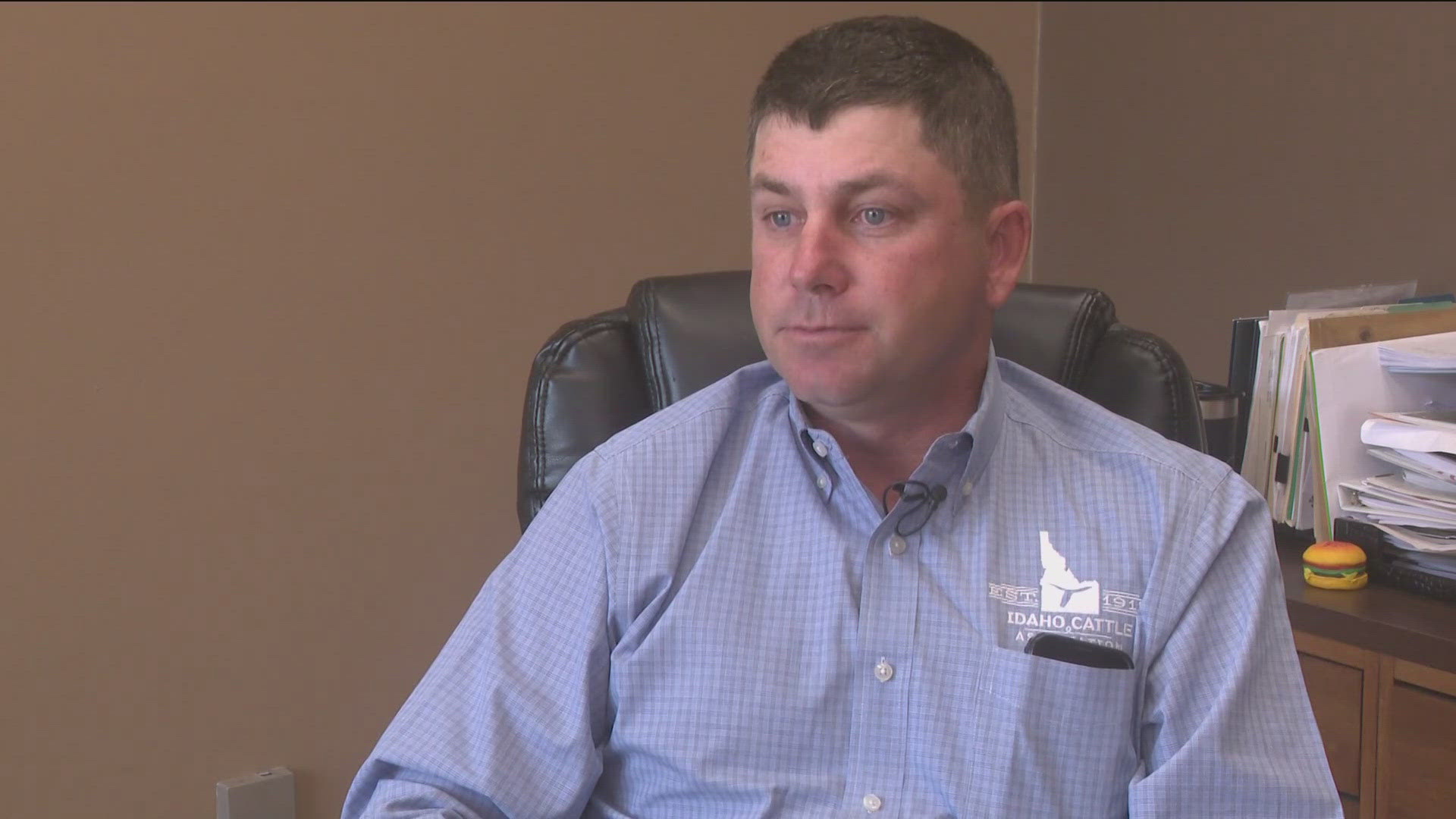BOISE, Idaho — When you go to the grocery store, you are likely paying more for your favorite items.
The Consumer Price Index for meats, poultry, fish and eggs is up 30% since the start of 2020.
Looking at beef and veal specifically, the CPI report shows prices were up 4.2% in August compared to the same time last year.
Like any product, there is a process on how food gets to the dinner table.
For beef, ranchers raise cattle typically for 2 to 3 years. Then it goes to production to be processed, and gets delivered to the grocery store where you, the consumer, picks it up and takes it home.
"Idaho is unique in that we can go through that entire process here in the state," said Cameron Mulrony, the Executive Vice President for the Idaho Cattle Association. "From the starting cow calf operation, all the way through to on your plate can happen right here in Idaho. Not all states have that."
Like everything, there is a cost in all of this.
For ranchers, on average, they pay $1,200 per cow per year, but in years of drought and fire, the cost increases.
"Drought a few years ago kind of caused some herd reduction for lower cattle numbers, which is part of what's leading to where we're at now and these fires," said Mulrony.
During a drought, grain prices tend to spike, making it more expensive for ranchers to buy feed.
In drought and fire years, there are fewer grazing options making ranchers buy more of that expensive feed.
"All those factors here locally in Idaho develop into a regional problem, because we have the cattle base and the forage here in Idaho that really is a big part of the west," said Mulrony.
Cost impacts have ranchers making tough decisions, like lowering their herd count and processing cattle that would have stayed in production for another three to five years.
University of Idaho Agricultural Economics Assistant Professor Brett Wilder said it's partially because of a big drought three years ago.
"We do have relatively low supply at the moment," said Wilder.
Wilder said up until 2022, producers were able to keep up because cattle were able to get bigger and they were able to do more with that product.
Now, the herd sizes have been reduced and there's not enough cattle moving through the system.
"As we move forward into 2025 and 2026, I would expect that supply continues to be very low," said Wilder. "It takes a long time. It's almost a two year cycle, really, almost a three year cycle, if you want to talk about from the time that cow is bred to the time you have a calf and a steer finished out and feed on and beef on your table."
"It boils down to supply and demand," said Mulrony. "The US cattle herd is as low as it's been in quite some time, but demand remains high."
Impacts from this year are also not showing promise for those high prices in the future.
The fires across the region have burned thousands of acres for cattle to graze on and some ranchers lost cattle in those fires.
Wilder expects prices to continue to climb through 2025.
"It's really not a great time to be a consumer and so that's all of us, right? Regardless of what we do for a living, or even those of us that participate in production agriculture, those farmers and ranchers that are out boots on the ground, they're still consumers, too," Wilder said.
Wilder is optimistic prices will come back down in 2027 and 2028, but for the time being, is there any way for you to save money buying beef?
Mulrony said, shop local and bite the up front cost of buying a cow from a local ranch.
"Going to a producer and buying a half or a full beef and have it processed yourself," said Mulrony. "If you look at the total cost of all the cuts, it would bring it down."

